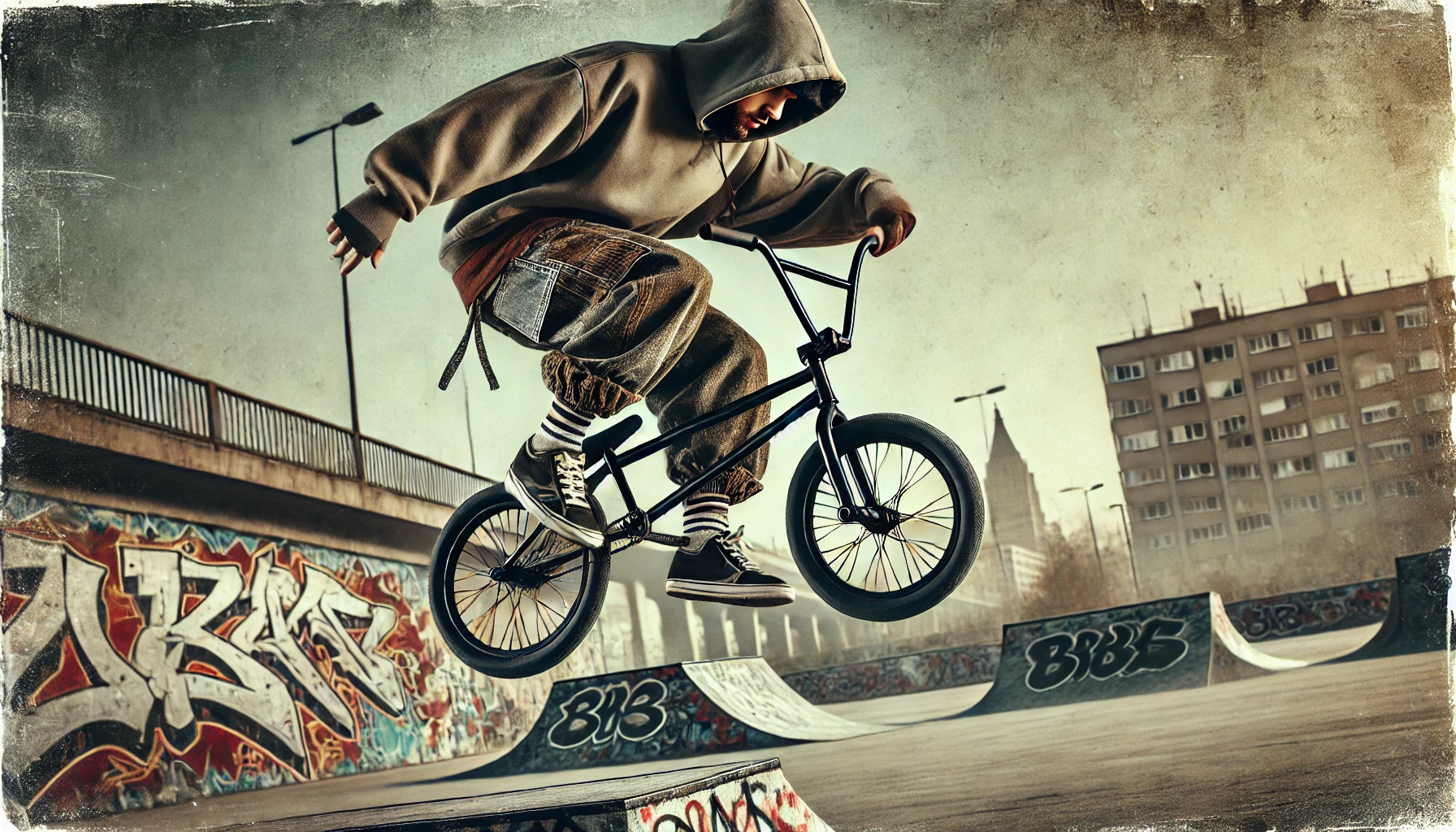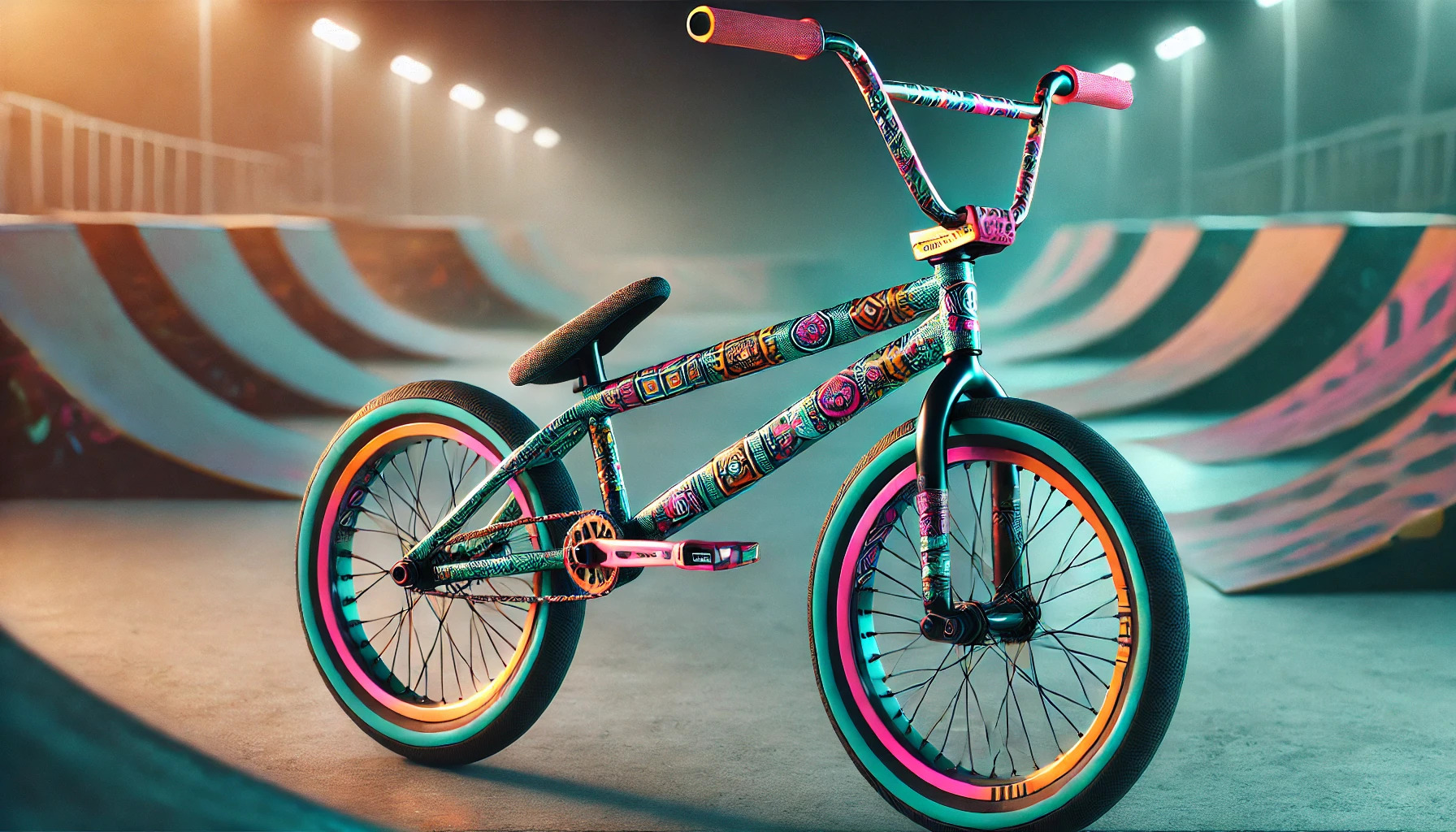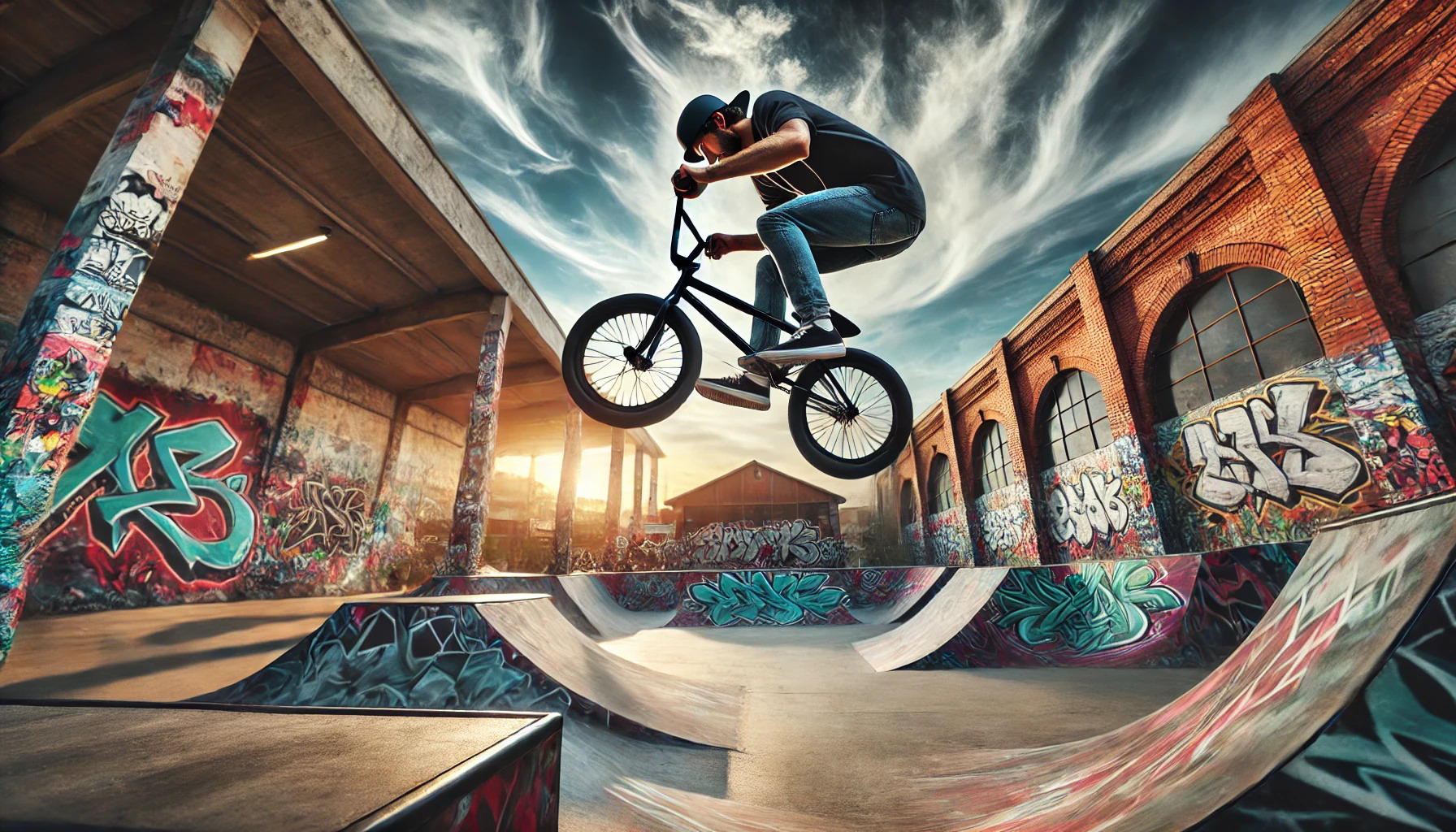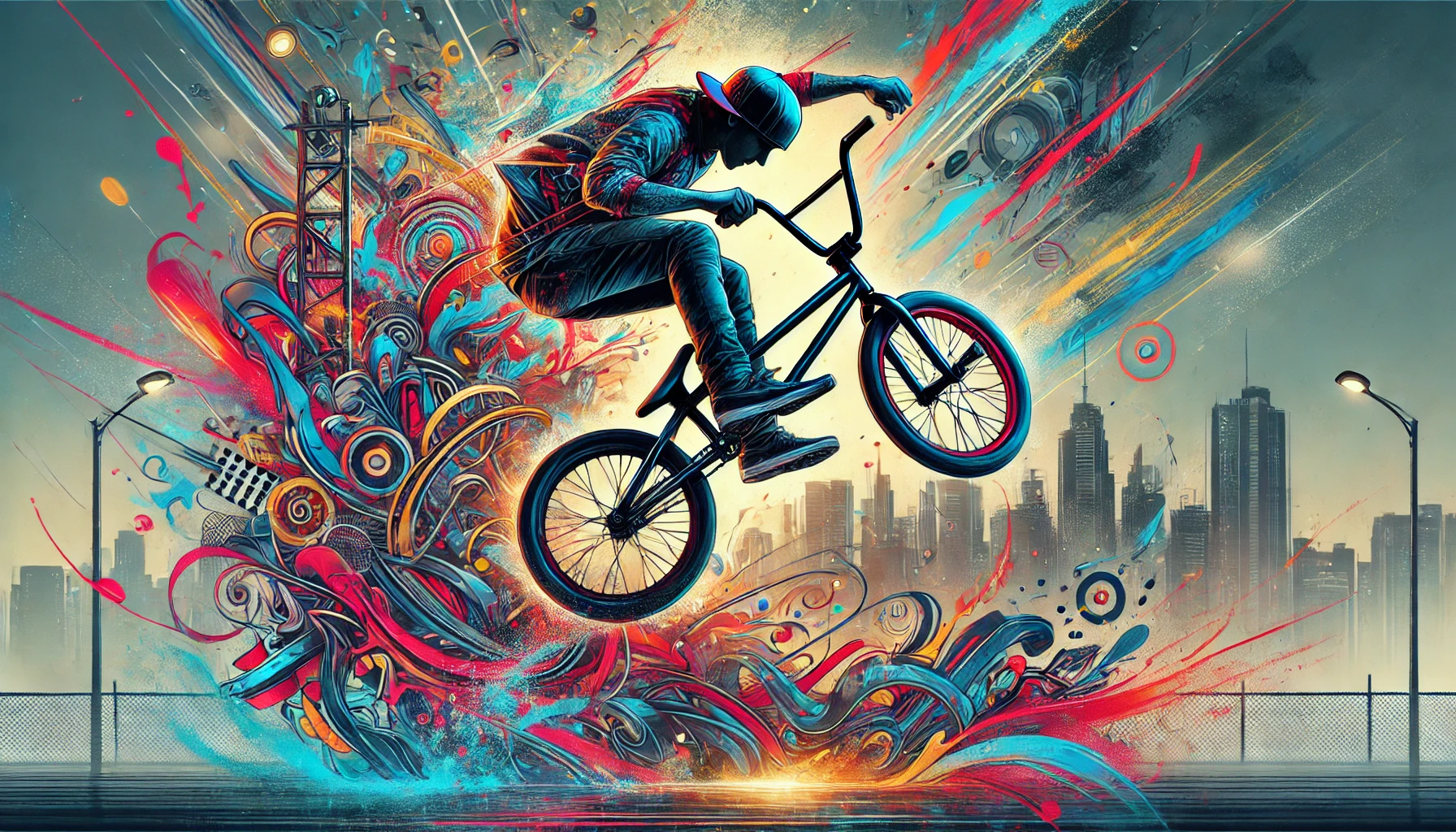How BMX Influences Streetwear and Urban Fashion

A BMX rider isn’t just someone doing backflips off concrete ledges or grinding rails in a dimly lit parking lot. BMX is movement. It’s rebellion. It’s an entire culture shaped by the streets, pushing against the expected, making the impossible look effortless. That attitude? It seeps into fashion, shaping streetwear in ways that aren’t always obvious but are impossible to ignore.
The Birth of BMX Fashion
Streetwear didn’t just wake up one day and decide to borrow from BMX. It happened because BMX riders needed clothing that worked for them. Loose-fitting pants, tough fabrics, and durable sneakers weren’t a fashion statement at first—they were survival gear. Riders needed clothes that could take a beating from falls, chain grease, and pavement scrapes while still letting them move freely.
Why BMX Riders Dress the Way They Do
- Function Over Fashion – Before looking cool was a factor, BMX riders needed pants that wouldn’t tear after one bad fall. Thick canvas, reinforced stitching, and baggy cuts became the norm.
- Shoes That Stick – BMX requires insane grip, so skate shoes with thick soles and durable uppers naturally became part of the uniform. No one wants their foot slipping off a pedal mid-air.
- Layers, Always – BMX riders live outdoors. They’re out before sunrise and still riding after dark. Hoodies, windbreakers, and oversized tees became the go-to because they adapted to changing weather without restricting movement.
The Subtle Rebellion of BMX Streetwear
BMX has always been anti-mainstream. It doesn’t follow the rules of traditional sports, and its fashion reflects that. Unlike skateboarding, which eventually got absorbed into the big-name brands, BMX stayed raw. It thrived in the underground, influencing streetwear without letting itself be controlled by it.
The DIY Mentality
BMX riders don’t wait for brands to make what they need. They modify their own clothes—cutting pants shorter, sewing patches over ripped knees, or distressing sneakers until they fit just right. This do-it-yourself attitude bled into streetwear, inspiring the rise of custom pieces, hand-painted denim, and limited-run collections that look more like one-of-a-kind art than mass-produced fashion.
Logos? Who Needs ‘Em?
While skatewear leans heavily on big logos, BMX has always been about low-key branding. Riders favor small-batch companies and independent designers over household names. That’s why BMX-influenced streetwear often features minimal branding, instead focusing on quality, fit, and design that speaks without screaming.
The Crossover: BMX Meets High Fashion
It’s ironic. What started as a counterculture has now made its way onto runways. Big brands have taken cues from BMX style, turning functional gear into high-fashion pieces. But BMX riders aren’t wearing these overpriced imitations—they’re still rocking the real thing, whether it’s thrifted workwear, a local BMX brand, or a pair of Vans that have seen better days.
High-End Brands Inspired by BMX
- Balenciaga’s oversized fits – Look at any BMX rider from the ‘90s, and you’ll see those same baggy silhouettes.
- Nike SB and BMX Collabs – Even though Nike originally focused on skateboarding, it saw the influence of BMX and jumped in.
- Off-White’s industrial aesthetics – BMX is mechanical. Chains, metal, raw textures. High fashion took that grit and polished it.
The Influence on Sneakers
A BMX rider’s sneakers are as important as their bike. They need grip, durability, and enough cushioning to survive repeated impacts. This demand shaped sneaker culture in ways sneakerheads might not even realize.
What BMX Riders Look for in Sneakers
- Sticky Rubber Soles – Shoes need to grip pedals without slipping. That’s why brands like Vans, Etnies, and DC Shoes became BMX staples.
- Reinforced Stitching – One bad fall can shred a shoe. BMX sneakers have to be built tougher than the average pair.
- Flat Soles for Better Control – Unlike running shoes, which have curved soles, BMX shoes are designed flat to provide maximum contact with the pedal.
Streetwear Staples That BMX Helped Shape
You might not realize it, but some of the biggest streetwear trends came straight from BMX culture.
Baggy Pants and Workwear
BMX riders were rocking Dickies and Carhartt long before they were fashion statements. Why? Because those pants could handle repeated crashes without tearing apart. The baggy fit also allowed for unrestricted movement, which is key when you’re constantly jumping and twisting in mid-air.
Oversized Hoodies
Big hoodies aren’t just comfortable—they’re protective. BMX riders wear them as a layer against scrapes and wind. Streetwear brands ran with the look, and now oversized hoodies are a wardrobe essential.
Chain Accessories
Chains aren’t just fashion for BMX riders—they’re functional. Whether it’s a chain wallet to keep things secure mid-ride or a bike chain-inspired bracelet, this metal-heavy aesthetic found its way into urban fashion in a big way.
BMX and Streetwear: More Than Just Aesthetic
It’s easy to think BMX just influenced the way streetwear looks, but it’s deeper than that. It’s about mindset. BMX riders don’t wait for trends—they create them. They push boundaries, take risks, and refuse to be defined by the mainstream. That’s the energy that fuels streetwear.
The Attitude of BMX in Streetwear
- Anti-Authority – BMX thrives on breaking rules, whether it’s trespassing to ride an abandoned spot or pushing the limits of what’s possible on a bike. That rebellious streak carries over to streetwear, which often rejects traditional fashion norms.
- Self-Made Mentality – BMX riders film their own videos, make their own brands, and promote themselves without waiting for sponsorships. That DIY spirit is the foundation of independent streetwear brands.
- Toughness Over Trends – BMX isn’t about looking clean and polished. It’s about grit. Streetwear borrowed that authenticity, favoring raw, unfiltered aesthetics over mass-produced perfection.
The Unexpected Connection: BMX and Digital Influence
BMX culture has always thrived on visuals—gritty photos, VHS-style edits, and underground zines. Now, that’s evolved into digital creativity. From graphic tees featuring BMX-inspired artwork to riders experimenting with digital art, the crossover is growing. Even in digital spaces, BMX riders are pushing creativity.
Final Thoughts
BMX isn’t just a sport. It’s not just a hobby. It’s a way of thinking, moving, and creating. It’s shaped streetwear from the ground up—not just in how people dress but in how they approach fashion. The DIY mindset, the no-rules attitude, the blend of function and style—these aren’t just trends. They’re the DNA of streetwear.
Next time you see a baggy pair of workwear pants or a scuffed-up pair of Vans on the shelf at a high-end boutique, remember—before it was fashion, it was just a BMX rider’s everyday gear.


